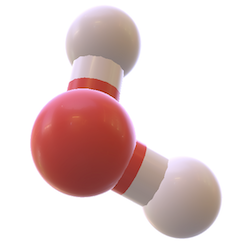Reaction: ESTG binds ESR1:chaperone complex
- in pathway: ESR-mediated signaling
In the nucleus, estrogens bind to estrogen receptors, members of the nuclear receptor superfamily. Human cells have 2 estrogen receptors, ER alpha and ER beta, encoded by two genes. Expression of the two genes varies by tissue: both are expressed in the central nervous system, the cardiovascular system, the urogenital tract and in the breast and bone; ER alpha expression predominates in the uterus, mammary gland, and liver, and the gastrointestinal tract expresses only ER beta (Pearce and Jordan, 2004; Gustafsson et al, 1999; Pfaffl et al, 2001; reviewed in Bai and Gust, 2009). The receptors show 47% identity overall and share a common organization consisting of 6 domains: an N-terminal A/B domain with ligand-independent activation function, a C domain containing the 2 DNA-binding zinc fingers, a hinge region (D) with a nuclear localization signal, an E domain that contains the ligand binding and dimerization domains as well as a ligand-dependent transactivation function, and a C-terminal F domain of poorly characterized function. The DNA-binding domain is the most highly conserved (97% identity) while the ligand-bindind domain is more variable (47% identity) (reviewed in Ruff et al, 2000; Bai and Gust, 2009). ER alpha and beta can homo- and heterodimerize, and recognize a common estrogen-response element due to their shared DNA-binding domains (reviewed in Bai and Gust, 2009). Functional studies suggest that ER alpha and beta have overlapping but distinct roles in estrogen-responsive transcription (Harrington et al, 2003; Katzenellenbogen and Katzenellenbogen, 2000; Pearce and Jordan, 2004; Pfaffl et al, 2001)
In the unliganded state, estrogen receptors are part of a multi-subunit complex containing HSP90, p23 (also known as PTGES3) and other chaperone-associated proteins (Joab et al, 1984; Segnitz et al, 1995; Knoblauch et al, 1999; Bouhouche-Chatelier et al, 2001; Fliss et al, 2000; Oxelmart et al, 2006; reviewed in Smith and Toft, 2008; Bai and Gust, 2009). This complex is part of a chaperone binding and release cycle shared by many nuclear receptors (described in more detail in the pathway "HSP90 chaperone cycle for steroid hormone receptors") that governs receptor folding and activity and may contribute to a high-affinity conformation of the ligand-binding domain (reviewed in Pratt and Toft, 1997; Smith and Toft, 2008). HSP90 release from the receptor complex requires ATP hydrolysis (Smith et al, 1993; Grenert et al, 1997; Panaretou et al, 1998; Obermann et al, 1998; Smith et al, 1992; reviewed in Smith and Toft, 2008).
In the unliganded state, estrogen receptors are part of a multi-subunit complex containing HSP90, p23 (also known as PTGES3) and other chaperone-associated proteins (Joab et al, 1984; Segnitz et al, 1995; Knoblauch et al, 1999; Bouhouche-Chatelier et al, 2001; Fliss et al, 2000; Oxelmart et al, 2006; reviewed in Smith and Toft, 2008; Bai and Gust, 2009). This complex is part of a chaperone binding and release cycle shared by many nuclear receptors (described in more detail in the pathway "HSP90 chaperone cycle for steroid hormone receptors") that governs receptor folding and activity and may contribute to a high-affinity conformation of the ligand-binding domain (reviewed in Pratt and Toft, 1997; Smith and Toft, 2008). HSP90 release from the receptor complex requires ATP hydrolysis (Smith et al, 1993; Grenert et al, 1997; Panaretou et al, 1998; Obermann et al, 1998; Smith et al, 1992; reviewed in Smith and Toft, 2008).
Reaction - small molecule participants:
ESTG [nucleoplasm]
Reactome.org reaction link: R-HSA-8939204
======
Reaction input - small molecules:
estrogen
Reaction output - small molecules:
Reactome.org link: R-HSA-8939204

